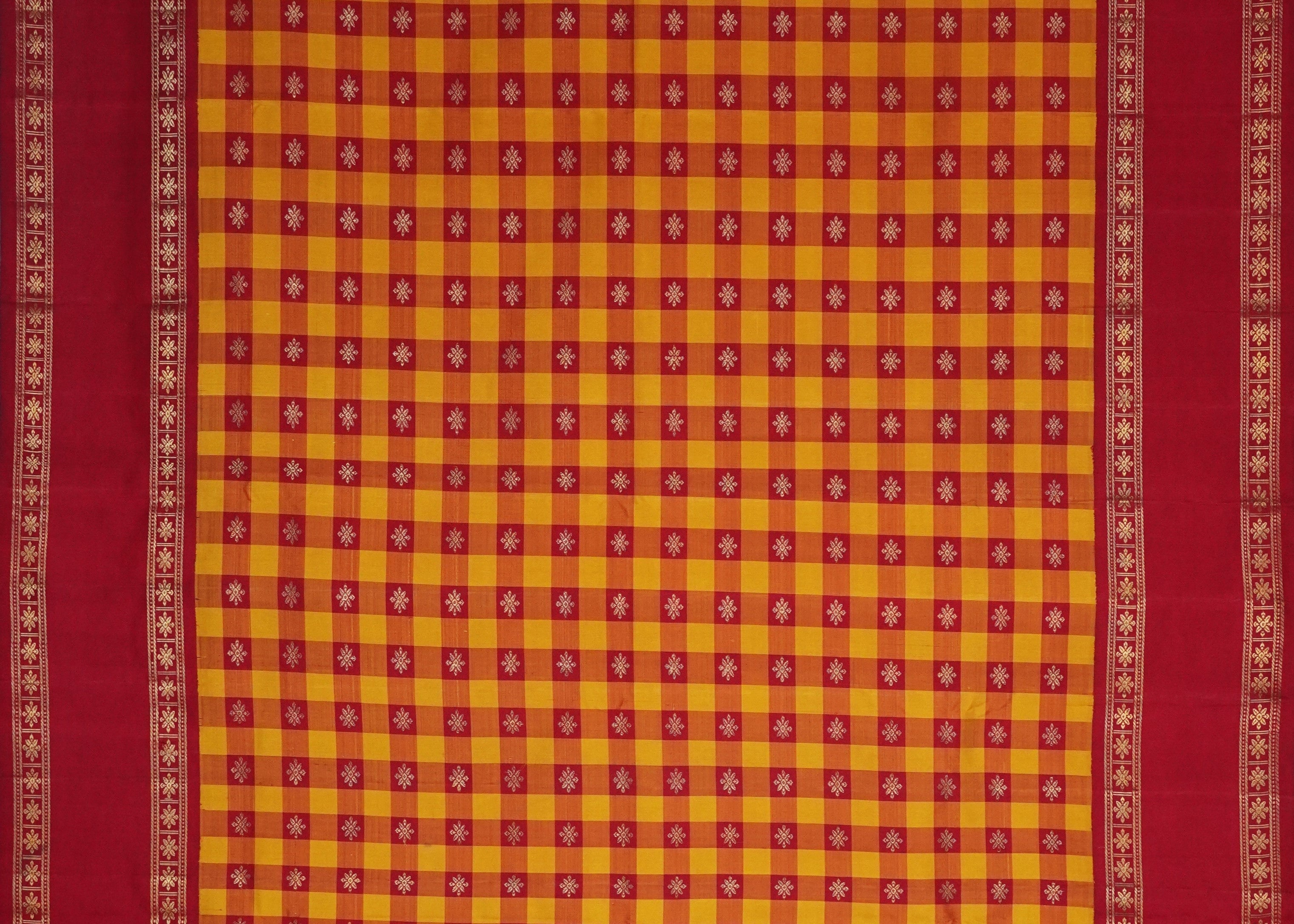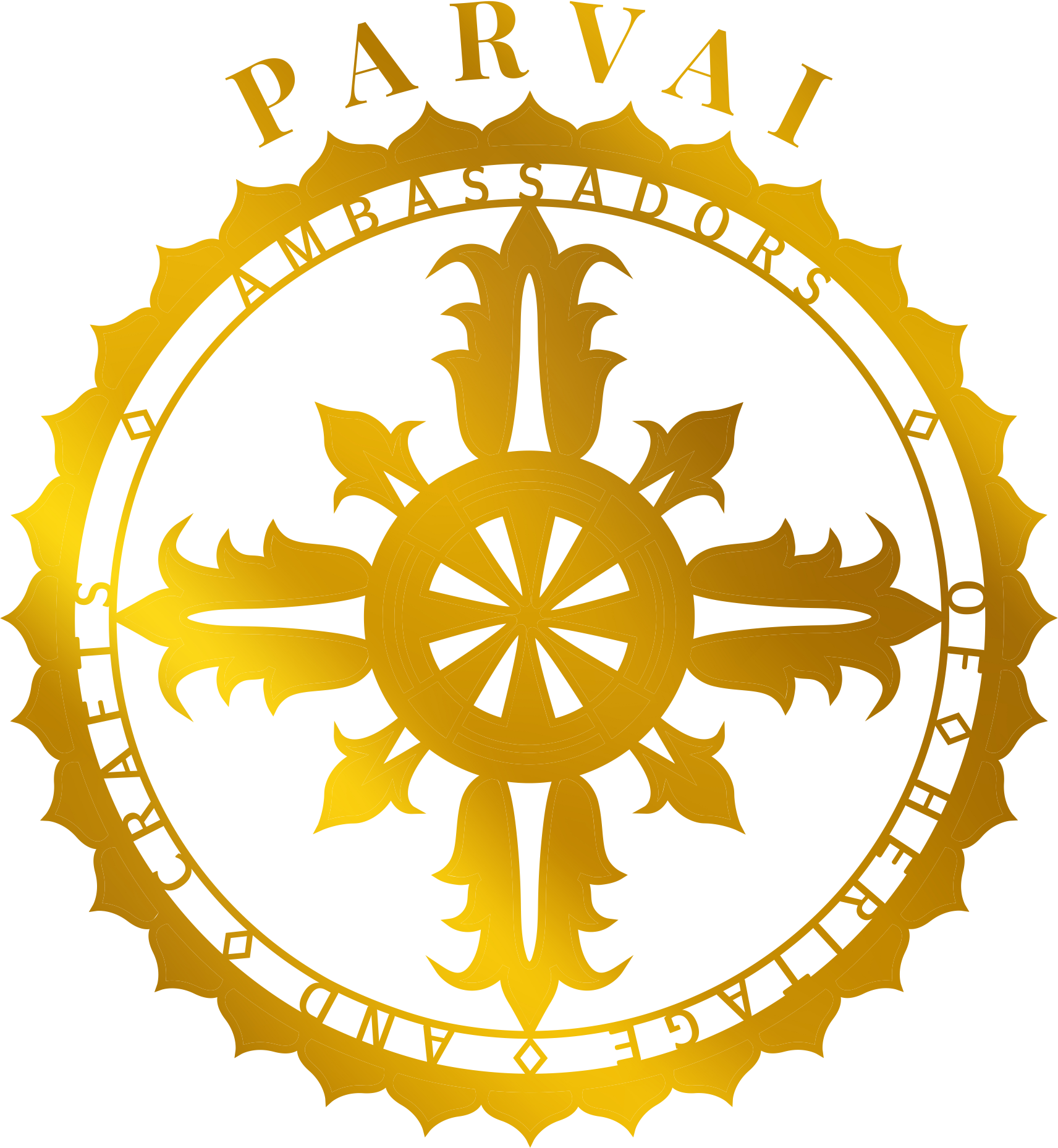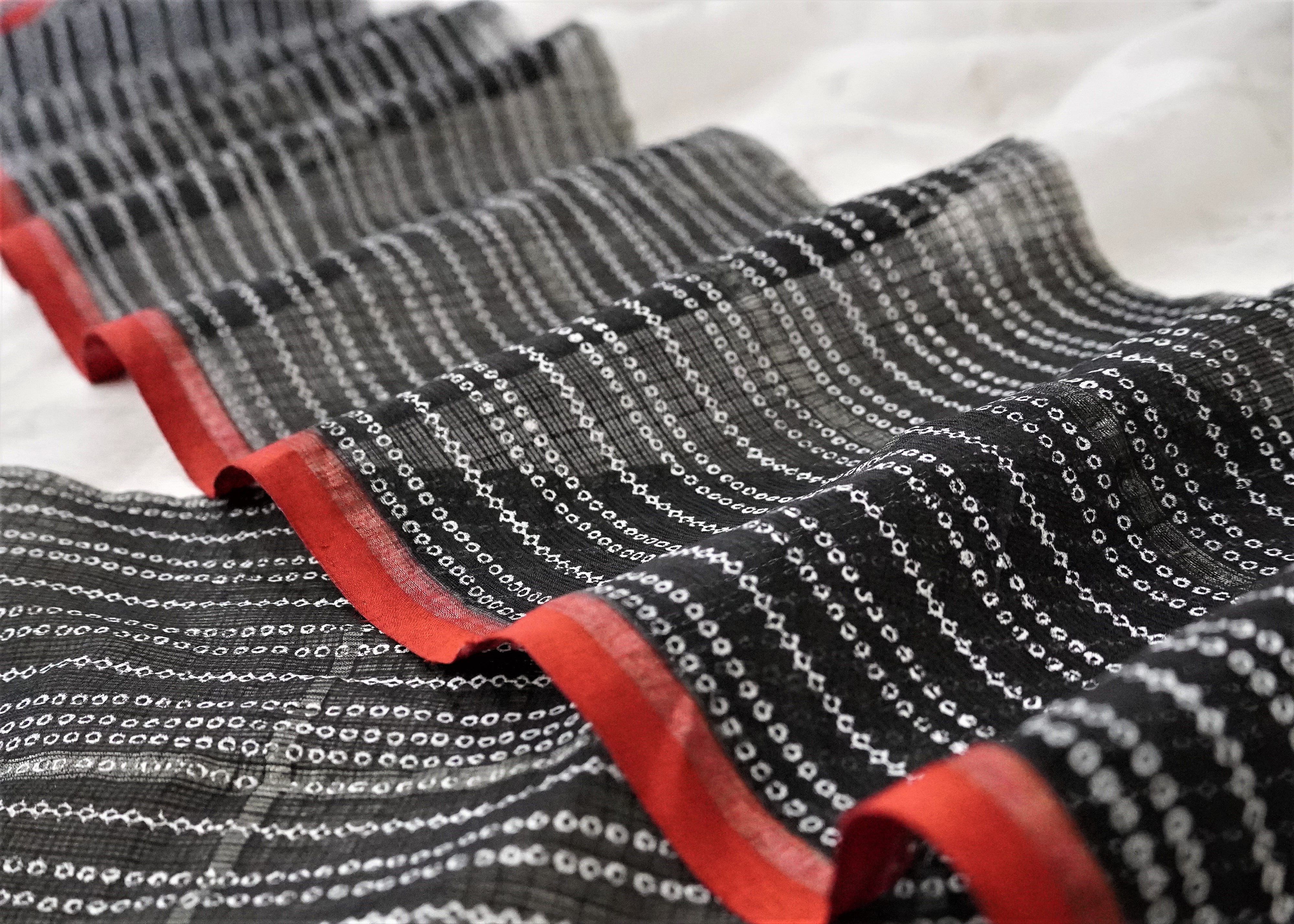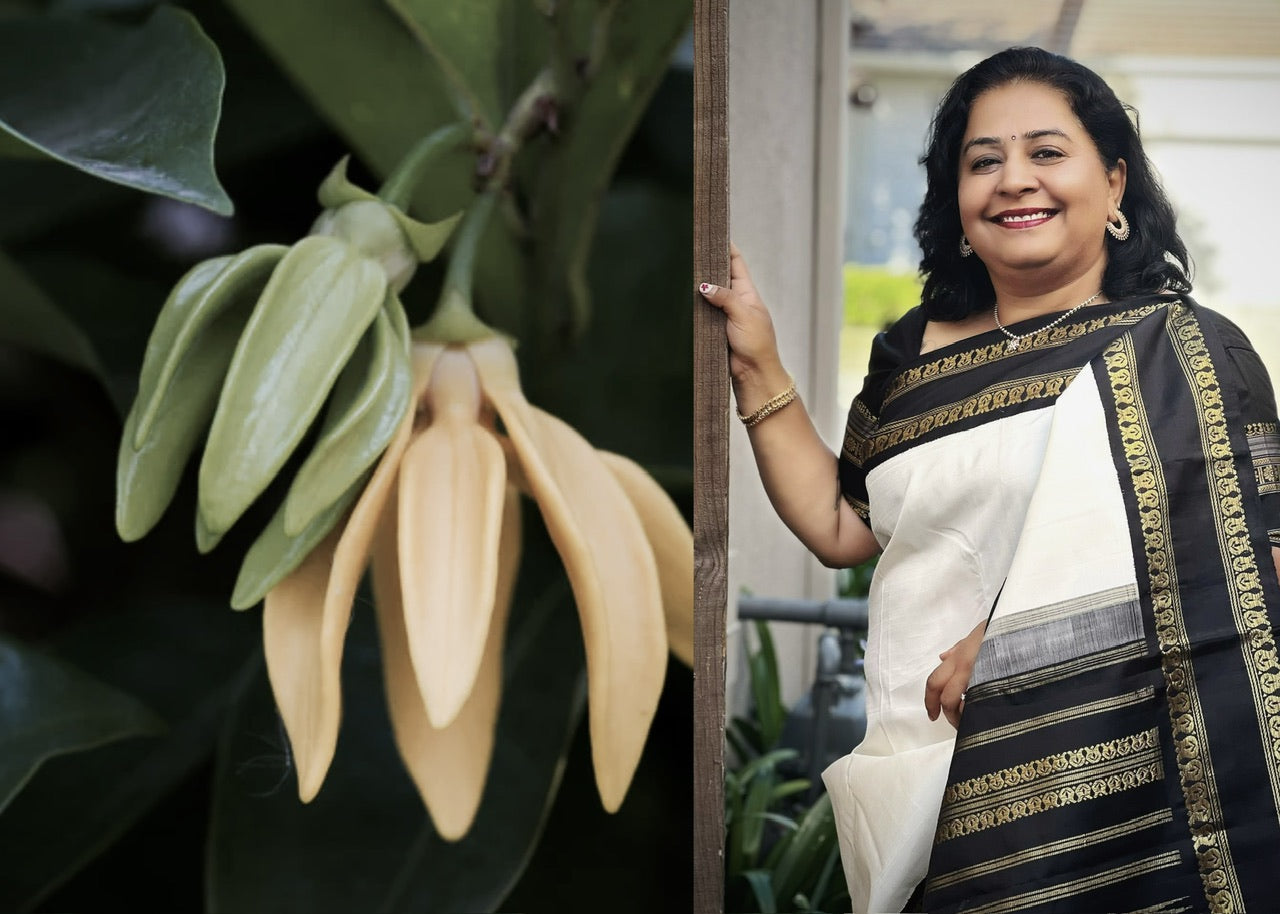
AMUDHA – A PERSPECTIVE TO TECHNIQUE
What does it take for a sari to be displayed in museums, discussed in books & spoken about with reverence. Is it the colours, motifs & designs? Or is it the construction, technique & perfection? When one learns to look beyond the design and appreciate art for art sake, one begins to appreciate the art for its artistry, mastery & perfection. This handloom week, we at Parvai seek to look beyond the design language, look past the trends and instead draw our focus to possibilities when technique meets art.

A DECADE OF DREAMING
The number thousand is very special to many cultures. The holy chants of Hindu gods & goddesses are often based on the 1000 names & qualities that extol them. It is not uncommon to celebrate 1000 moons. The Abrahamic religions reference how one prophetic day can equal a thousand years on earth. So it is no surprise that weavers would choose we incorporate a 1000 motifs like rudrakshams or kamalams into a sari to lend it a level of auspiciousness that is only enhanced by the symbolism of the gesture. At some level, the technical nuances & aesthetics overshadow the symbolism and the much discussed Ayiram Butta sari is one such classic example. Whatever be the reason these saris came to be, today they stand for a level of craftsmanship that we can only hope to emulate & copy, let alone overtake.
Our first brush with Ayiram Butta occurred almost a decade back, when these saris became a rage among sari lovers. The idea of 1000 buttas of rudraksham did sound important and we began looking for the perfect thousand butta sari. While these saris exist in abundance, a simple flip of the sari’s reverse can reveal how these buttas are connected by floats and possibly woven by a simplified jacquard & mechanised technique. One can’t help but wonder if technologically advanced machines only look at the cosmetic appeal to replicate & if they sacrifice the weave integrity in this process. Over the years we continued to covet the perfect ayiram butta sari. Luckily for us, we have managed to collect a few cherished pieces and study this technique with reverence. It has been our sincere wish to recreate the technique (and not just the design) of ayiram buttas.
OUR INTERPRETATION OF AYIRAM BUTTA
Ayiram butta is not about the number of buttas to us. Before the advent of punch cards, the loom had to be painstakingly set up with mathematical precision to ensure the body features the buttas at the correct placement. The buttas in an ayiram butta sari are usually centrally aligne onto a checked outline - doing which calls for an expert warp & weft arrangement. It is the coming together of this loom set-up that firstly intrigued us. Once such a loom is set up, in adai, every butta is woven individually, like embroidery. The tightness of these motifs determined not just the physical strength of the weaver but also their technical expertise. A poorly woven butta would after all come loose with washes & spoil the entire sari. While the pick determines the density of the weft, the structure of the sari is dependent on the physical strength & nuanced understanding of technique of the weaver who is seated at the loom. This is often complicated by the addition of the 2 border shuttles in a korvai loom where the borders may have another adai design. So an ayiram butta woven in the 1950s in an adai loom was the coming together of the loom set up with mathematical precision as well as the weaving done with extreme physical strength, patience & diligence. No doubt these saris were not woven commonly and came to be cherished weaves for special occasions.
And why is this special today? With the advent of punch cards & pneumatic looms, the mathematical prowess & physical strength have been replaced simplifying the weaving process considerably. However, this comes at the expense of the unsightly zari floats at the back of these saris. We understand this allows the ayiram butta saris to be woven to meet mass market demands.
INSPIRATIONS & INTERPRETATIONS
The Ayiram Butta has remained a dream project. Every once in a while, we would think of weaving one but put it aside since we were not sure if we could execute it with the integrity that it truly deserves. But we would always keeping looking for the perfect ayiram butta to study and learn from.
We have had the privilege of collecting a few from other weave clusters but the Kanchipuram ayiram butta has long evaded us. But inspiration can come from the past well. Once such inspiration came from an ayiram butta documented as a Puja Sari by renowned textile historian Jasleen Dhamija from her personal archives. And yet another came from the ultimate Sahasra Phool sari documented in a book that we revere, The Master Weavers. Studying these saris and the details that went into the making of these saris made us sit back in awe & wonder. Weaving a sari that is comparable to these in today’s day and age is close to impossible and yet these saris are were woven, sold & worn less than 50 years back.
Parvai has been scouting for weavers in Kanchipuram who can work on an ayiram butta sari for almost a decade now and we finally feel we are ready. This project has taken us a decade of research, planning & confidence. The actual seeds of the project were sown a few months ago although it has been a decade of interpreting what ayiram butta means to us for us to get here.

PARVAI’S ODE TO AYIRAM BUTTA
Having studied the ayiram butta & sahasra kamalam saris from the past & present, we arrived at some non-negotiables when it came to our interpretation. The sari would be woven on a simple three-shuttle loom. We knew for a fact that the buttas had to be individually crafted. The body would have a checks to encase these buttas and the sari would feature a korvai border & bindh pallu. We kept the colours for the first warp in shades of yellow & red, as if invoking the higher powers to bless us. Amudha features a simple pallu since the focus would be the body and not the pallu, and yet we wanted the pallu to befit the beauty of the body.
Parvai’s Amudha:
After a lot of research, we agreed on these are details for the first project.
Warp Ply - 2 Ply Pure Mulberry
Weft Ply - 4 Ply Pure Mulberry
Reed - 40 Kunjam Reed
Pick - 35-38 picks per inch

The first few saris will be woven in 5g zari and we would later incorporate other zari variants like 3g & tested zari for clients who request for the same.
Once the design details were fixed, we moved to the loom set up, dyeing & sourcing the zari. The warp arrangement was complicated since we were determined to use a new reed which had to be pitnied or tied meticulously. The project uses 4 different adais – one for the border, one for the buttas and two more for the pallu. The designs were sketched using a graph and translated to adais.
As we speak, the loom is being set up and we are hopeful of getting the first sari out in a few weeks. We know we are likely to encounter a few more challenges and we will watch every step for challenges that may rise. The first row of buttas and border will help us understand if the adai has been set up right and it will allow us to recalibrate anything needed. The next big step would be the pallu which features annam and the traditional seepu reku.
We are immensely thankful to the patronage the sari has received from our circle of trust at Parvai. The first 6 saris have been pre-booked and this ensures the loom will be up and running for at least 18months. The pitni work and adai set up will be done in August and the first few inches of the sari will be woven in August for us to QC and make changes. By October the first sari would be ready and the second by year end. Our weavers would then break for Pongal and resume work in February to make the third sari if the weather co-operates. March to June next year, we will complete another three saris and we will hopefully be able to take orders for more if we still think there is a demand for such a sari then. We have always emphasized how important patronage is to create something worth collecting and we are happy to have built that tribe here at Parvai. We celebrate this sisterhood of patrons every day and not just on handloom day.
We do not claim to revive or recreate any of the amazing samples documented by textile historians but merely attempt to get the technique right. And yet, we can sense the pressure – several old weavers have been consulted and we have set the loom up with a lot of hard work from multiple sources.
Amudha in pictures









1 comment
Good luck Parvai 👍I’m looking forward to this project ..The entire process is overwhelming for me to read, I can understand how challenging it would have been even to visualize this 1000 buttas in adai ..Impressive n waiting to see the outcome 🤗🤗
Vidhya
Leave a comment
This site is protected by hCaptcha and the hCaptcha Privacy Policy and Terms of Service apply.